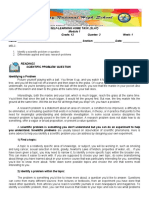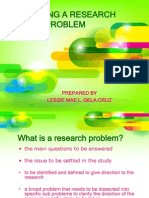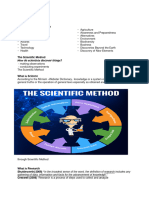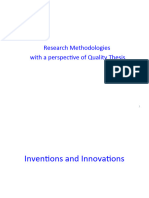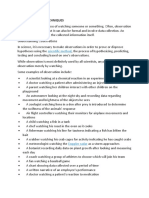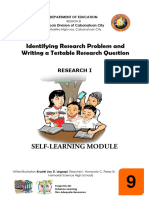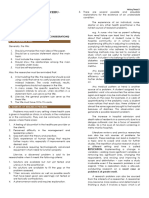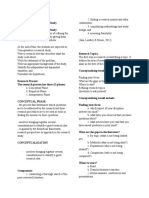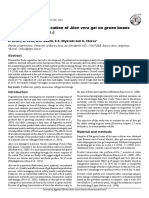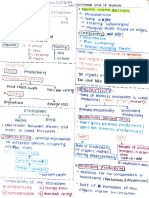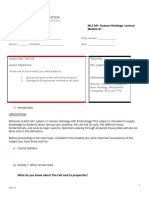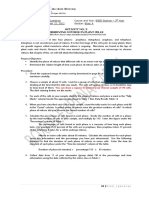0% found this document useful (0 votes)
26 views26 pagesResearch Problem Lecture - Ste 8 Week 8
A research problem is a specific, clear, and testable question that addresses a knowledge gap or practical challenge, serving as the foundation for scientific investigation. Good research problems are characterized by clarity, researchability, significance, ethical considerations, feasibility, originality, and specificity. Historical examples illustrate how well-defined research problems can lead to significant scientific discoveries and advancements.
Uploaded by
Tom Ricsan Delos SantosCopyright
© © All Rights Reserved
We take content rights seriously. If you suspect this is your content, claim it here.
Available Formats
Download as PDF, TXT or read online on Scribd
0% found this document useful (0 votes)
26 views26 pagesResearch Problem Lecture - Ste 8 Week 8
A research problem is a specific, clear, and testable question that addresses a knowledge gap or practical challenge, serving as the foundation for scientific investigation. Good research problems are characterized by clarity, researchability, significance, ethical considerations, feasibility, originality, and specificity. Historical examples illustrate how well-defined research problems can lead to significant scientific discoveries and advancements.
Uploaded by
Tom Ricsan Delos SantosCopyright
© © All Rights Reserved
We take content rights seriously. If you suspect this is your content, claim it here.
Available Formats
Download as PDF, TXT or read online on Scribd
/ 26



